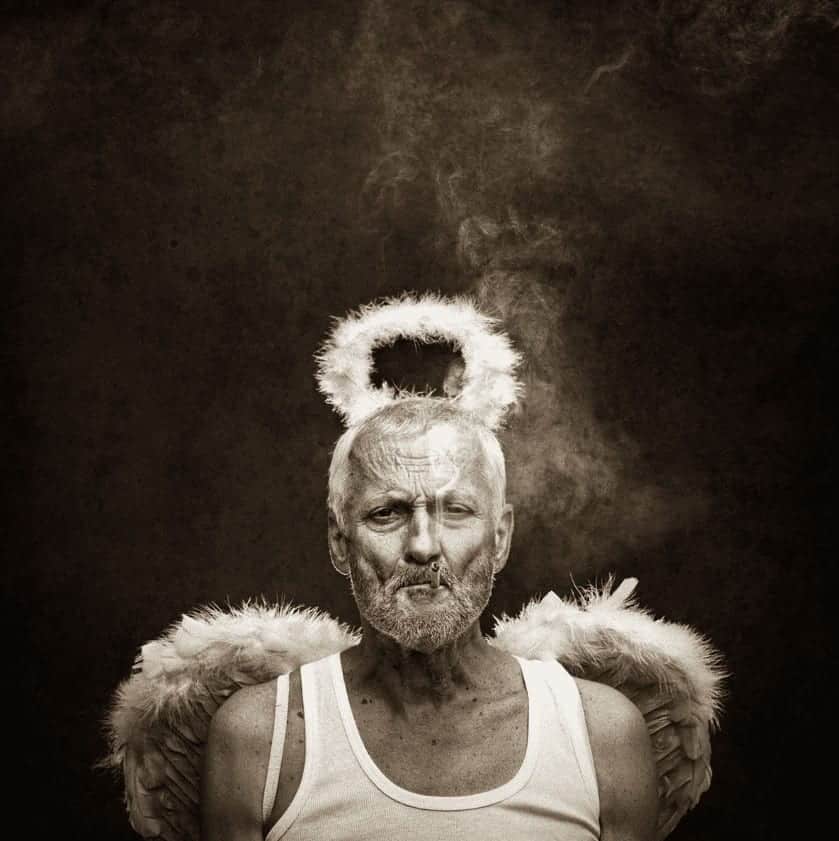
by Hans Bernhard (Schnobby), CC BY-SA 3.0 via Wikimedia Commons
Drawing people - portraying a person is one of the special tasks of an artist. In addition to the correct anatomy, i.e. the basics, there are enough differences that make every person unique.
Be it the figure, the face shape or the hairstyle. If you only change one part, a person looks very different again.
We will treat the basics of drawing body proportions and step-by-step tutorial for painting portraits. Regardless of whether you traditionally draw with pen and paper or digital, here you will find tips and exercises to improve your art.
Introduction to drawing people and portraits
Drawing people is an art form that enjoys many people. Whether beginner or experienced artist - drawing portraits requires patience and practice.
The goal is to understand the proportions of the human body and to represent them on paper. Face forms and postures play an important role here.
Impressive portraits can be created with the basics of human drawing There are numerous tutorials and tips for learning and practicing the drawing of people. There are also special books and craft sets for children to arouse interest in art.
In the digital age there are also many ways to paint or edit portraits on the computer.
In this blog article we will introduce step-by-step tutorials to prepare and sketch a portrait and give tips on presenting facial expressions and emotions.
You will also learn techniques for highlighting details such as hair, eyes or lips in a portrait as well as frequent mistakes in human drawing and how you master them.
We hope that this article will help you improve your skills in the field of human drawing and to find inspiration for your own artistic work.
Basics: proportions, facial shapes and postures
When drawing people, it is essential to understand the basics of the human body. This includes proportions , facial shapes and postures . This can initially be discouraging for beginners, but with practice and the right tips and tutorials, drawing people quickly becomes passionate.
There are numerous advice and inspirations on the topic in books or on blogs. The digital age offers even more options for creative forms of expression by painting or tinkering portraits on the computer or tablet . Children can playfully learn how to draw people and develop their artistic skills.
However, it is important to practice again and again to master the basics of drawing.
Preparations and sketching of a portrait
After familiarizing yourself with the basics of human drawing, you can now start to draw a portrait. First of all, you should take your time to take a close look at the model and analyze proportions and facial forms.
Beginners should first practice presenting postures. If you master these basic skills, you can go on to the actual drawing process. It is advisable to make a draw and capture shadows and lights in rough lines with pencil or coal.
It is important to step down again and again and to look at the image from a distance to keep an eye on the composition.
If you prefer to work digitally, you can also use appropriate programs and paint on the PC or tablet. The preparation here is also important: you should consider beforehand which tools and techniques should be used and, if necessary, make a sketch.
Overall, the following applies: exercise makes the master! With patience and perseverance, everyone can learn to create impressive portraits - whether young or old, beginners or advanced.
The head
Drawing the human head is one of the most difficult tasks of a draftsman. You have to know the rules of the perspective, and basic anatomical knowledge is also indispensable. The axes of the head offer great help in drawing the human head.
The shape of a head is mostly similar to that of an ice cream. So it makes sense to use a hard -boiled egg to help you study the axes of the head. Like the egg, the head can be shared along an imaginary vertical axis into two symmetrical halves.
This vertical axis is also called symmetry axis or main axis .

of Schnork [CC BY-SA 4.0], via Wikimedia Commons
The so -called transverse axles finally indicate important proportions of the head for drawing. The eye axis runs in the right angle to the main axis and halves the head: the distance between the bottom of the chin and the eye axis is the same as that between the eye axis and the crown.
In the following video you can see in the time -lapse how a beautiful drawing of a women's face is created in the profile:
The hair
The hair is a big challenge for many new draftsmen. This applies in particular if you have the claim to make them appear realistic and almost three -dimensional. The so -called level of detail is a main difficulty when drawing hair. This means the large amount of hair we have on our head.
If you do not want to draw every hair individually, you need a technique to simplify the character object, only indicate your hair gently or you draw the hair with a reduced degree of detail. The latter is probably the preferred variant if you do not want to draw extremely photo -realistic or hyper -realistic.
For example, you focus on drawing only strands of hair or you indicate some individual hair while leaving the rest of the white. As an extreme example of this drawing technology, you can lead to drawing comics and Japanese manga . There the hair is usually only very roughly displayed.
Furthermore, the play of light and shadow is of great importance when displaying hair. The light and shadow effects have an enormous impact on whether the drawing succeeds and the desired plasticity is achieved.
You can find further instructions for drawing hair under the following links:
- Drawfabrik.at - Sabrina Hassler: Draw realistic hair in 8 steps
- Wikihow: Draw realistic hair
- Kunstkurs-online.de-draw hair
The hands
The most movable parts of the human body are hands. Your two main views are the palm view and the back of the hand. The mobility of the fingers ensure the finger links.
The thumb consists of two, the remaining fingers of three limbs. The thumb is the only finger that can be opposed to the rest of the other, and is therefore particularly important when gripping.
The easiest way to draw is to draw a hand if you use your own as a model. When displaying the variants of the fist, it is best to make quick sketches, since they are particularly suitable for recognizing the details and the characteristic lines and tints.
The hint of the tints is part of sketching, even if they are not yet quite precise.
Study individual hand movements from different views. For the drawing, always choose the most beautiful.
The naked human body (the act)

of Schnork [CC BY-SA 4.0], via Wikimedia Commons
The representation of the naked human body is one of the most difficult tasks given when learning the drawing. They require extensive preparatory studies and the application of all its learned drawing arts.

by Ingeborg Bernhard (Schnorch) [CC BY-SA 4.0], via Wikimedia Commons
Tips for presenting facial expressions and emotions when drawing people
Drawing people is not just about correcting the proportions and facial forms. representation of emotions and facial expressions also an important factor to create an impressive portrait.
However, this can be a challenge, especially for beginners. That is why we have five tips on how to show facial expressions and emotions better when drawing people.
- Practice: As with all other aspects of drawing, the following also applies here: Exercise makes the master! Try to draw different facial expressions and experiment with different techniques and materials.
- Observing : To get realistic emotions on paper, you have to watch closely. Pay attention to small details such as folds or muscles on the face that express a certain emotion.
- Trying out : Experimenting with different styles and techniques to find out which best suit you. Maybe it works better for you with gentle lines or strong hatching.
- Use reference images : Use photos or sketches as a template to give you an overview of different facial expressions.
- Visualize feelings : Try to put yourself in the person whose portrait you draw. How does she feel? What feelings do you want to express? These questions can help to bring realistic emotions on paper. With these tips you can improve your skills when presenting emotions and facial expressions and make your portraits even more impressive.
Find the inspiration: famous portrait artists and their works
When it comes to drawing people, it can sometimes be difficult to find inspiration. But don't worry!
There are many famous portrait artists and their works that are accessible to everyone and can serve as a great source of inspiration. Regardless of whether it is a beginner or advanced in drawing people - the works of art by artists such as Leonardo da Vinci , Vincent van Gogh or Frida Kahlo can help everyone improve their skills.
Studying your works can help to better understand the basics of the human body and facial proportions, and to learn tips and techniques for drawing and painting portraits.
Especially for children or beginners, it is a great way to gain initial experience in drawing people by tinkering with brushes and paper. But also for experienced artists, studying the works of other inspiration and new ideas for their own creative work also offers.
Whether digital or on paper - keep practicing your skills in drawing portraits and are inspired by the beauty of the works of art of great portrait artists!
Wonderful drawing tutorials in the YouTube Playlist
Free online drawing courses
On the website of www.fesen-lernen.net you will find a free online drawing course that has grown. This includes step -by -step instructions, as well as various tips and example pictures.
There you will also find a chapter on drawing people .
We would also like to recommend step by step instructions from How To Art
Numerous instructions, tutorials and inspirations on Pinterest

Owner and Managing Director of Kunstplaza. Publicist, editor, and passionate blogger in the field of art, design, and creativity since 2011. Successful completion of a degree in web design as part of a university program (2008). Further development of creativity techniques through courses in free drawing, expressive painting, and theater/acting. Profound knowledge of the art market through many years of journalistic research and numerous collaborations with actors/institutions from art and culture.

















